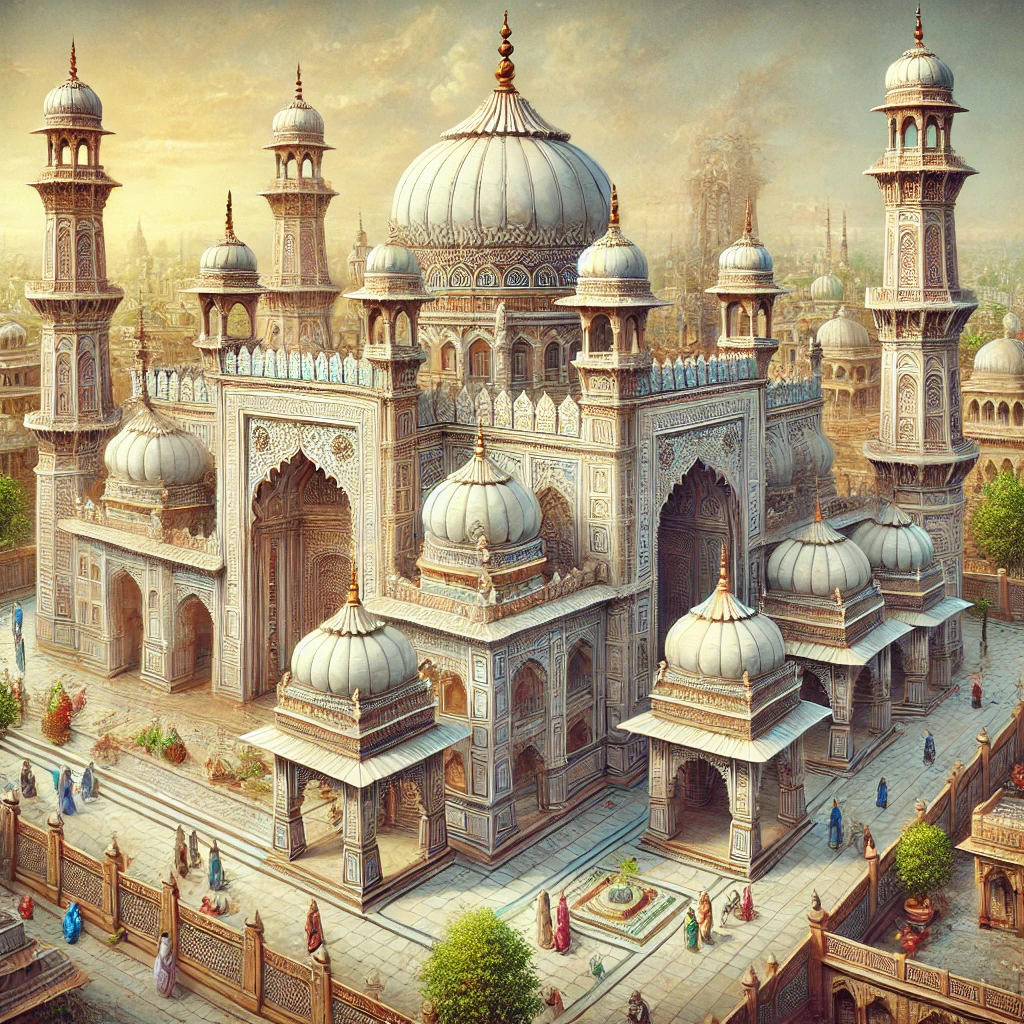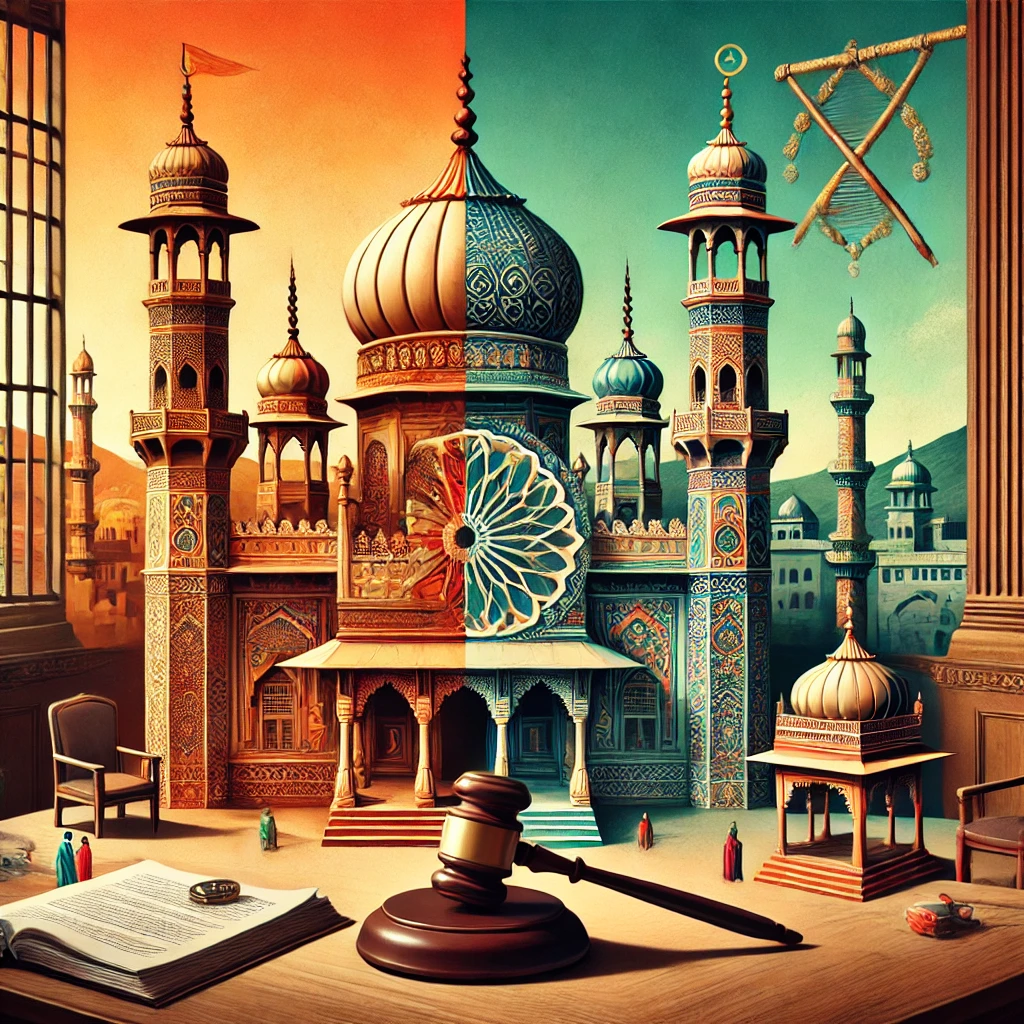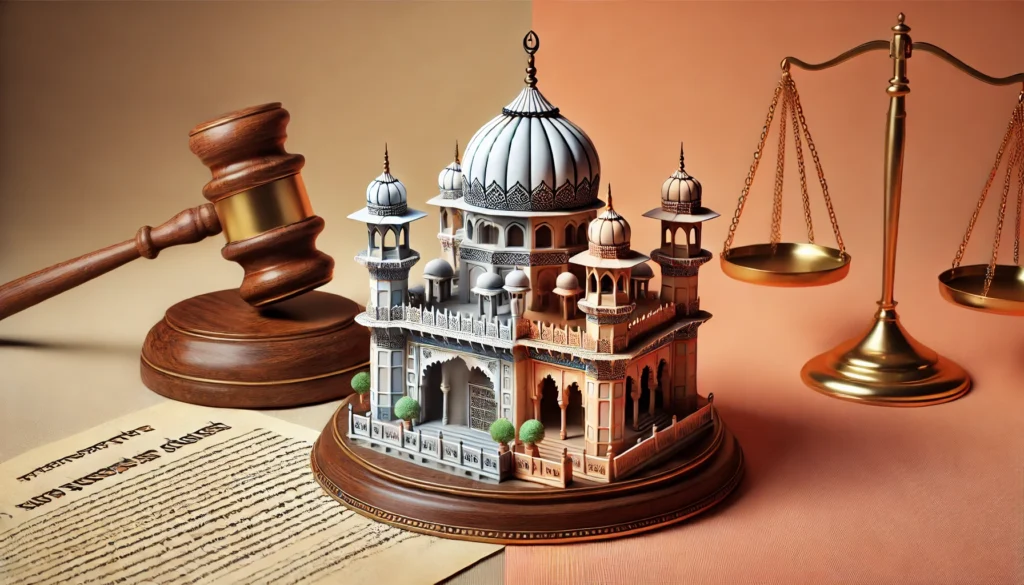India’s rich and diverse cultural history often brings its complex past to the forefront, sparking debates and controversies. A recent court ruling has brought attention to the Ajmer Sharif Dargah, a significant Sufi shrine in Rajasthan, with a petition claiming it was built on the site of a Hindu temple. This claim has triggered intense discussions that span religious, political, and social lines. Let’s explore the details of this controversy, its historical context, and what it could mean moving forward.
The Ajmer Sharif Dargah: A Sacred Site for Many

The Ajmer Sharif Dargah is one of the most prominent Islamic pilgrimage sites in India. It is the tomb of Moinuddin Chishti, a revered Sufi saint who played a major role in spreading Sufism throughout the Indian subcontinent. Every year, millions of devotees from various faiths visit the shrine seeking spiritual solace and blessings.
The Petition and the Claims Made
The petition filed in court asserts that the site where the Ajmer Sharif Dargah stands today was originally home to a Hindu temple. According to the petitioners, the structure may have been altered or destroyed during historical invasions and religious transformations.
Key Points from the Petition:
- Archaeological Evidence: The petitioners claim to have found remnants of Hindu symbols and structures in the dargah complex, which they argue indicates that the area was once a Hindu temple.
- Historical Documentation: The petition refers to various historical texts that support the argument that the site was a place of Hindu worship before the arrival of Islam in the region.
- Call for an Archaeological Survey: The petition demands a comprehensive archaeological survey, including advanced methods like Ground Penetrating Radar (GPR), to probe the historical origins of the site.

Court’s Decision to Accept the Petition
The court has not yet made any judgment on the validity of the claims but has allowed the petition to proceed. This decision marks the beginning of a potential investigation into the historical and archaeological aspects of the site, opening the door for more debates and legal proceedings.
Historical Context: A Land of Contested Religious Sites
Throughout India’s history, invasions and the rise of various empires often led to the repurposing of religious sites. During the medieval period, it was common for temples to be destroyed or converted into mosques or other places of worship. This context is important for understanding ongoing disputes over sites like Ayodhya (Ram Janmabhoomi-Babri Masjid) and Kashi Vishwanath-Gyanvapi.
Potential Implications of the Case
- Religious Sensitivities: Religious sites hold deep meaning for their respective communities, and disputes over them often evoke strong emotions. Followers of the Ajmer Sharif Dargah may view the petition as an attack on their sacred space, while some Hindu groups might see it as an opportunity to reclaim what they believe is rightfully theirs.
- Political Ramifications: Religion and politics are deeply intertwined in India, and controversies such as this may be used by political parties to appeal to specific voter bases, potentially heightening polarization ahead of elections.
- Legal Precedents: The outcome of this case could influence future legal battles over religious sites in India. It could set a precedent for other disputes, potentially leading to more legal petitions over sites with contested histories.

Perspectives on the Dispute
- For the Petitioners: The petitioners argue that their claims are based on solid historical and archaeological evidence. They believe that acknowledging the site’s original identity is crucial for historical accuracy and cultural justice, without undermining the significance of the dargah itself.
- For the Dargah Authorities and Devotees: Devotees of the Ajmer Sharif Dargah view it as a symbol of interfaith harmony. They feel that such controversies threaten the sanctity of a place that has long been a beacon of peace and spiritual solace, transcending religious boundaries.
Challenges in Handling the Case
- Archaeological Surveys: Investigating active religious sites is challenging both logistically and ethically. Conducting such surveys without disturbing the daily activities of the shrine or infringing upon its sanctity presents a delicate balance.
- Maintaining Social Harmony: India’s diverse society thrives on mutual respect and coexistence. Disputes like this have the potential to ignite tensions, making it essential for all involved parties to approach the issue with sensitivity and wisdom.
- Lengthy Legal Proceedings: Given the complexity of the matter, the case may drag on for years or even decades, involving numerous appeals and counter-petitions, which will further prolong the dispute.
The Philosophical Question: Revisiting Historical Grievances
At the heart of this case is the larger question of whether historical wrongs should be rectified if proven, especially if it risks disrupting present-day societal harmony. While some argue that uncovering the truth about the past is important, others fear that revisiting old conflicts may only deepen divisions in an already complex society.

The Role of Media and Public Discourse
The media has a vital role in shaping public opinion during such sensitive matters. Responsible and balanced reporting is crucial to avoid sensationalizing the issue. Public discourse should prioritize constructive dialogue over divisive rhetoric to help foster understanding and peace.
What Lies Ahead?
The acceptance of the petition by the court is just the beginning of a long and complex journey. Archaeological surveys, legal arguments, and public reactions will likely shape the outcome of the case. Regardless of the final ruling, the case will undoubtedly have a significant impact on how India deals with its historical and cultural identity moving forward.
Conclusion
The controversy surrounding the Ajmer Sharif Dargah highlights the intricate relationship between history, religion, and cultural heritage in India. As the legal proceedings unfold, it will be important to balance historical investigation with respect for faith and communal harmony. The outcome of this case could shape future discussions on India’s heritage and the delicate task of preserving its diverse legacy.
FAQs
- What is the significance of the Ajmer Sharif Dargah? The Ajmer Sharif Dargah is a sacred shrine dedicated to Moinuddin Chishti, attracting millions of devotees across religious lines, symbolizing spiritual peace and harmony.
- What is the claim made in the petition? The petition claims that the dargah was built over a Hindu temple and calls for an archaeological survey to investigate the site’s true history.
- How has the court responded to the petition? The court has accepted the petition, allowing further investigation and legal examination, but has not yet made a ruling on the claims.
- Could this case set a legal precedent? Yes, the outcome could establish a precedent for future cases involving contested religious sites in India.
- How can communal harmony be maintained in such a situation? It is essential for leaders, media, and influencers to promote understanding, avoid inflammatory language, and encourage respect among different communities.






